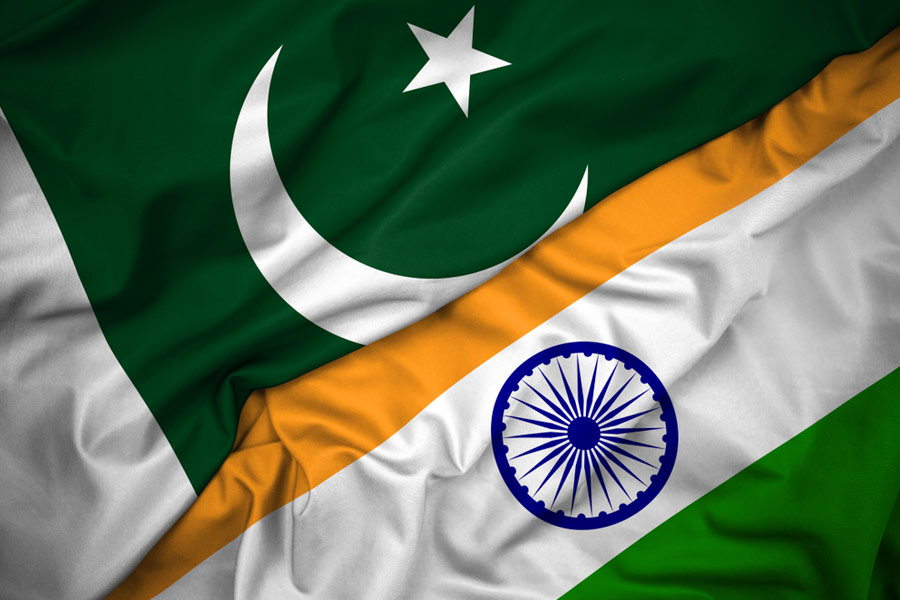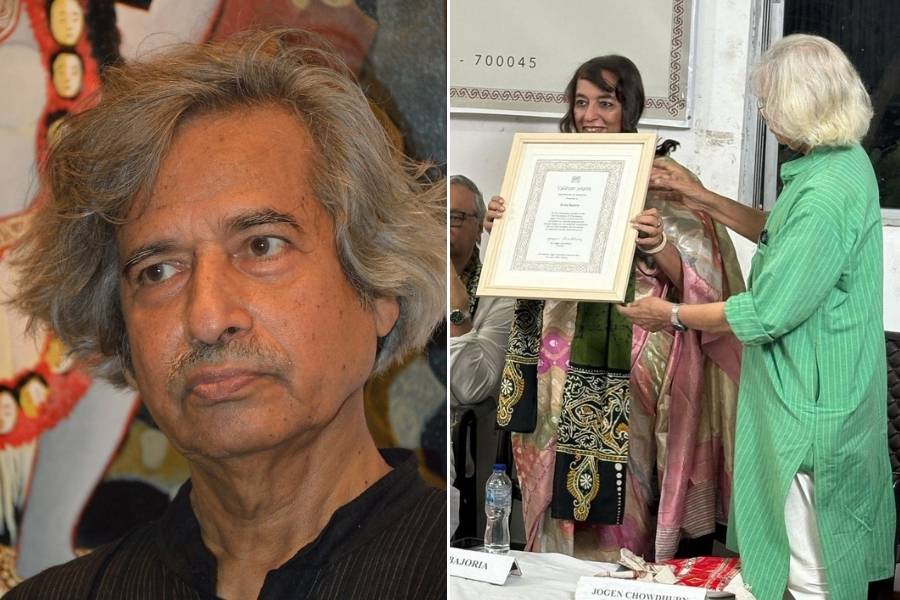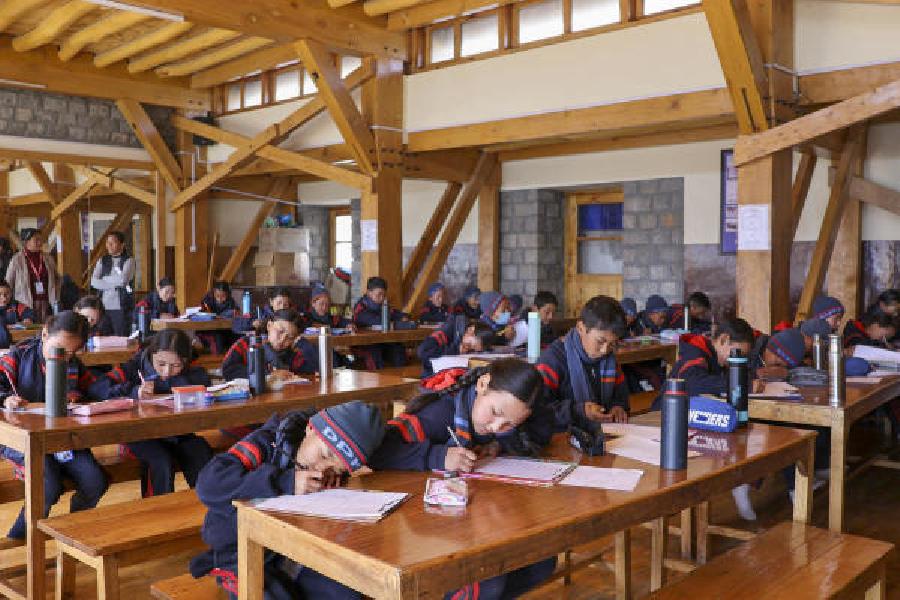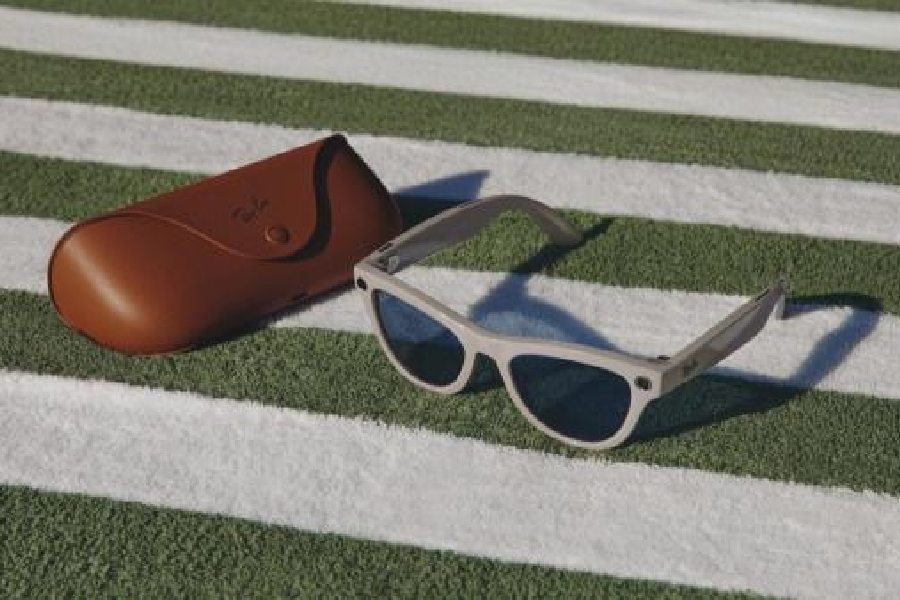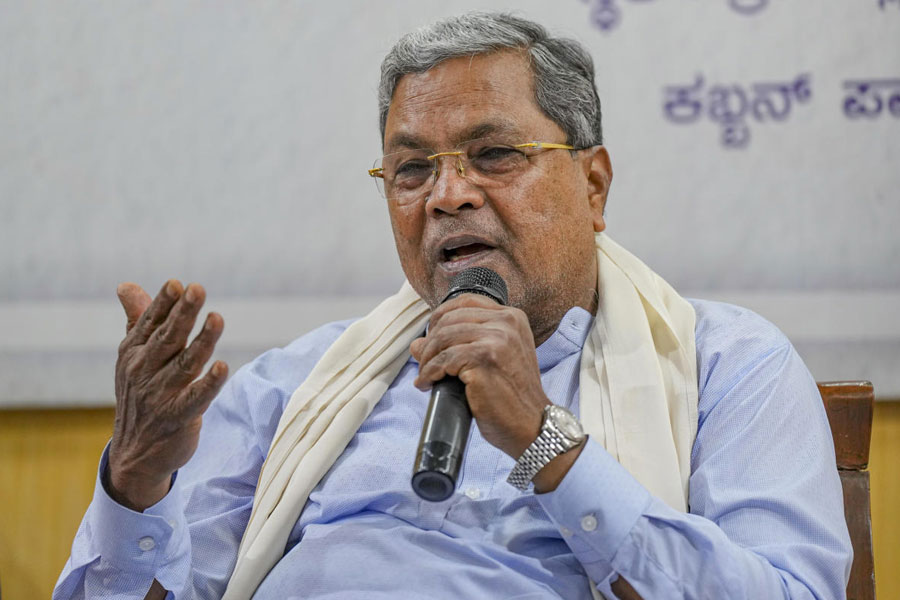 |
The house of Kanishka’s — one of the pioneers of hand-block printing in Calcutta — stepped into its 45th year this Independence Day. The couple who make up Kanishka’s — Nandita and Dilip Raja (picture right) — went down memory lane when t2 met them for a chat at their office housed inside their Hindusthan Road store.
Let’s rewind… tell us about how you started this journey.
Nandita: Down the lane where we lived (Dover Lane), there was this small boutique called Mimi’s where I used to take my old saris to get printed. He (points to husband Dilip) used to accompany me. One day after we got home we started discussing that the designs were the same old, there was no innovation… it’s always phul pata (florals)… why not folk? Then he said, let’s do it ourselves. I didn’t take him seriously… then he said, you give me one of your old saris and I’ll show you what I can do. He hung up the sari like a canvas and started painting on it with fabric paint. When it was over, I couldn’t believe it. He had done a saaper phona (snake hood) and zodiac signs on it. Then one after another he did a few more. Slowly, we got our paints from Burrabazar, we got block cutters…. And that’s how we started. We used to go to the Howrah haat on Tuesdays to get saris to print on. We started with just Dhonekhali saris. And on August 15, 1970, we had our first exhibition… in the house… with friends and family. A magazine editor saw a piece of ours worn by someone and she loved it. She came to us, saw our stuff and asked us to send clothes for a shoot. We sent the pieces and the shoot came out beautifully. She took a centrespread. After that people started coming constantly. A friend’s store was lying vacant, on Loudon Street, so we took it up, in 1972. We named our brand Kanishka’s after our elder son. We took this store in 1973. At first we just got a room here, and then slowly we took the whole property.
 |
| Moon Moon Sen at a photoshoot for Kanishka’s in the ’70s |
Kanishka’s has patrons all over the country. Why haven’t you expanded beyond this store?
Dilip: Because we have a controlled production. It is more of a design initiative. I’ve never even encouraged my children to join me. Though they (son Prateek and daughter-in-law Priyanka) have joined now.
Nandita: It was always the two of us. He (Dilip) designs each and every block that we make and I decide on the placement, design and colours.
Mr Raja, you’ve said that you don’t come from a design background, yet you design each and every block that goes into Kanishka’s saris…
Dilip: Initially I started with scripts, that has always been the signature. I have done scripts in each and every Indian language… Sanskrit, Devanagari, even in Chinese and Indonesian. I treat scripts as pictures, I capture the design part of it. Then we have done folk art extensively. We have always done storytelling saris.
Nandita: We have done folk from everywhere, not just Bengal. We’ve done Worli paintings, Madhubani. We were also very influenced by Odisha art. We brought Bomkai to Calcutta. Bomkai was woven by tribals of a tiny village in Odisha; we went there and convinced them to do it for us. We were always fascinated by Lord Jagannath, so we made that into our brand logo, but since one can’t copyright a god’s picture, we gave Jagannath hands for our logo... so that it was different.
Dilip: Talking about scripts, I designed the ‘K’ for Usha (Uthup) specifically, for her bindis. Usha has always been a very loyal patron. I get inspiration from everywhere. Like I get inspired by seeing a karela climber, a kumro pata, or a shosha (cucumber). Everything gives me ideas and gets me thinking.
How did you start diversifying from block prints?
Nandita: Our customers forced us to diversify. We got into handlooms. Everything in Kanishka’s is natural fabrics, we have never used any synthetic material. All our looms are exclusive for us. We have tussore looms throughout India. Maybe we haven’t been able to expand that much, but we didn’t want a big enterprise; we are happy with the small operations.
 |
| Lisha in Kanishka’s bird-print sari |
You were the pioneers in hand-block printing, but later it became so common. How have you retained your identity?
Dilip: We have constantly changed our designs. I don’t throw away any block, I keep them and repeat them maybe after five years. I’m also not bothered about people copying our designs… there’s been a lot of copying, you can’t stop that. So I change my designs.
Who is the Kanishka’s woman?
Nandita: We have women of all age groups and profiles. A lot of working women, school teachers. Sometimes three generations — grandmother, mother and daughter — have shopped for our saris. Many Bengali office-going women living outside Calcutta come to shop, to pick up saris to wear to office meetings…. So that’s the kind of profile.
What have you done to keep the young generation interested?
Nandita: That’s where Kora (the pret line) came in, to make it still relevant. We started with men’s kurtas because husbands who would come with their wives to shop started demanding something for them. And now we have the Kora line for people of all age groups. To make textiles, handblocks and handlooms contemporary.


